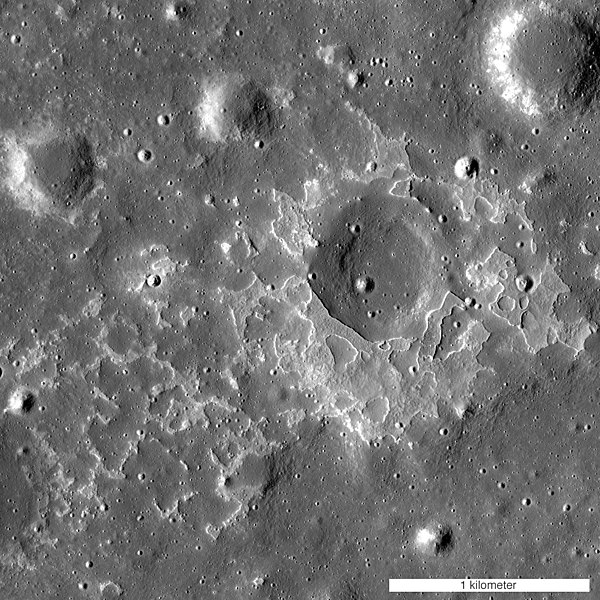Mare Smythii is a lunar mare located along the equator on the easternmost edge of the Moon's near side, named for the 19th-century British astronomer William Henry Smyth. It is one of only two lunar maria that are named after people, the other being Mare Humboldtianum.
Mare Smythii
The topography (top) and corresponding gravity (bottom) signal of Mare Smythii reveals a mascon in its center
View from Apollo 10
Oblique view from Apollo 16
The lunar maria are large, dark, basaltic plains on Earth's Moon, formed by lava flowing into ancient impact basins. They were dubbed maria by early astronomers who mistook them for actual seas. They are less reflective than the "highlands" as a result of their iron-rich composition, and hence appear dark to the naked eye. The maria cover about 16% of the lunar surface, mostly on the side visible from Earth. The few maria on the far side are much smaller, residing mostly in very large craters. The traditional nomenclature for the Moon also includes one oceanus (ocean), as well as features with the names lacus ('lake'), palus ('marsh'), and sinus ('bay'). The last three are smaller than maria, but have the same nature and characteristics.
Ancient rift valleys – rectangular structure (visible – topography – GRAIL gravity gradients) (1 October 2014)
Ancient rift valleys – context.
Ancient rift valleys – closeup (artist's concept).
Irregular mare patch – evidence of young lunar volcanism (12 October 2014)








